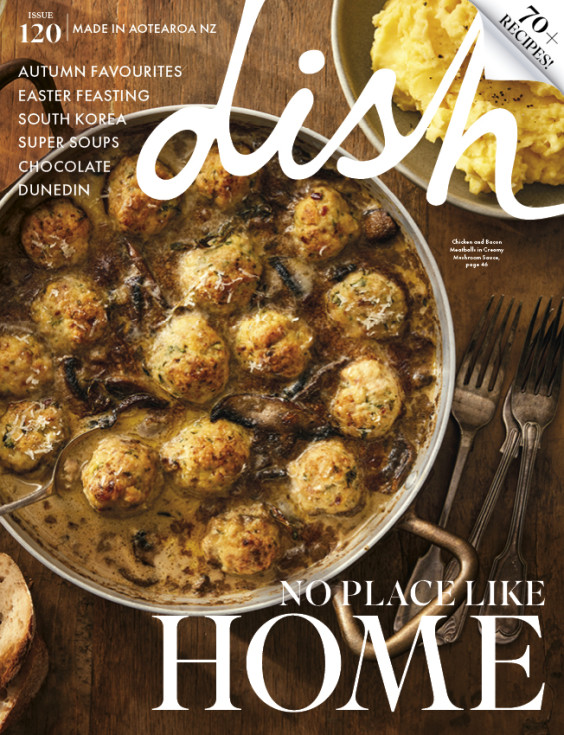The Best of South Korea's Food Markets
Photography by Rosseau Loubser and Chrisanne Terblanche.
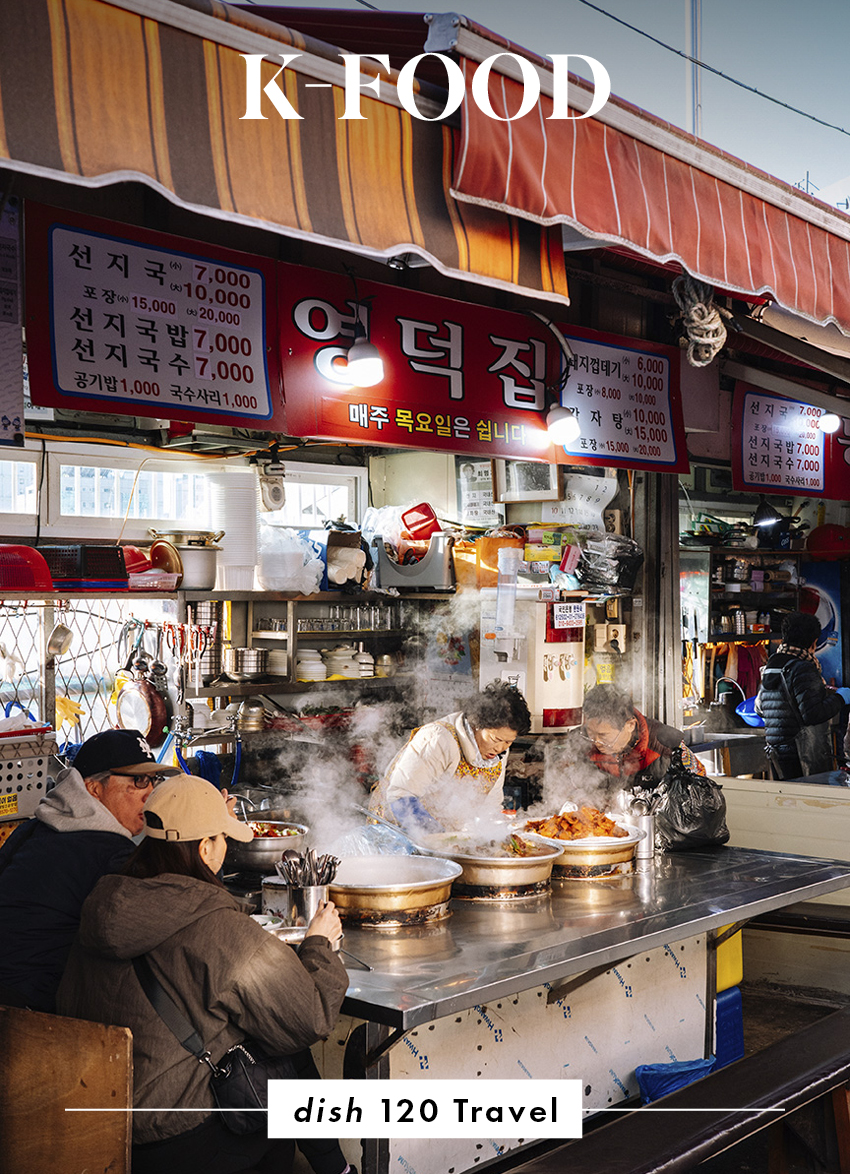
Dish Art Director, Chrisanne Terblanche explores the narrow alleys and bustling markets of South Korea to indulge in the best street food on offer and discovers that the most important thing you need for a trip to this amazing country is an empty stomach.
Over the last couple of decades, South Korean popular culture has seen an explosion in popularity, known as the “Korean Wave”.
All around the world, people are obsessing over their fave K-pop bands, following strict K-beauty routines and binge-watching K-drama boxsets. And while all things Korean have crept into our hearts and our minds, our stomachs have also joined the fan club as we discovered the joys of K-chicken and kimchi.
So it was no great hardship for my husband and I to trade our Aotearoa New Zealand summer break for almost three weeks of winter in South Korea. Geared up with warm coats, multiple layers of thermal vests and a big appetite, we were determined to experience as much of the vibrant, often chaotic, but always oh-so-worth-it street food scene. If you’re after cheap, cheerful and unfussy comfort food that does not compromise on quality and flavour, follow along our exploration of the amazing food markets of South Korea.
Gwangjang Market, Seoul
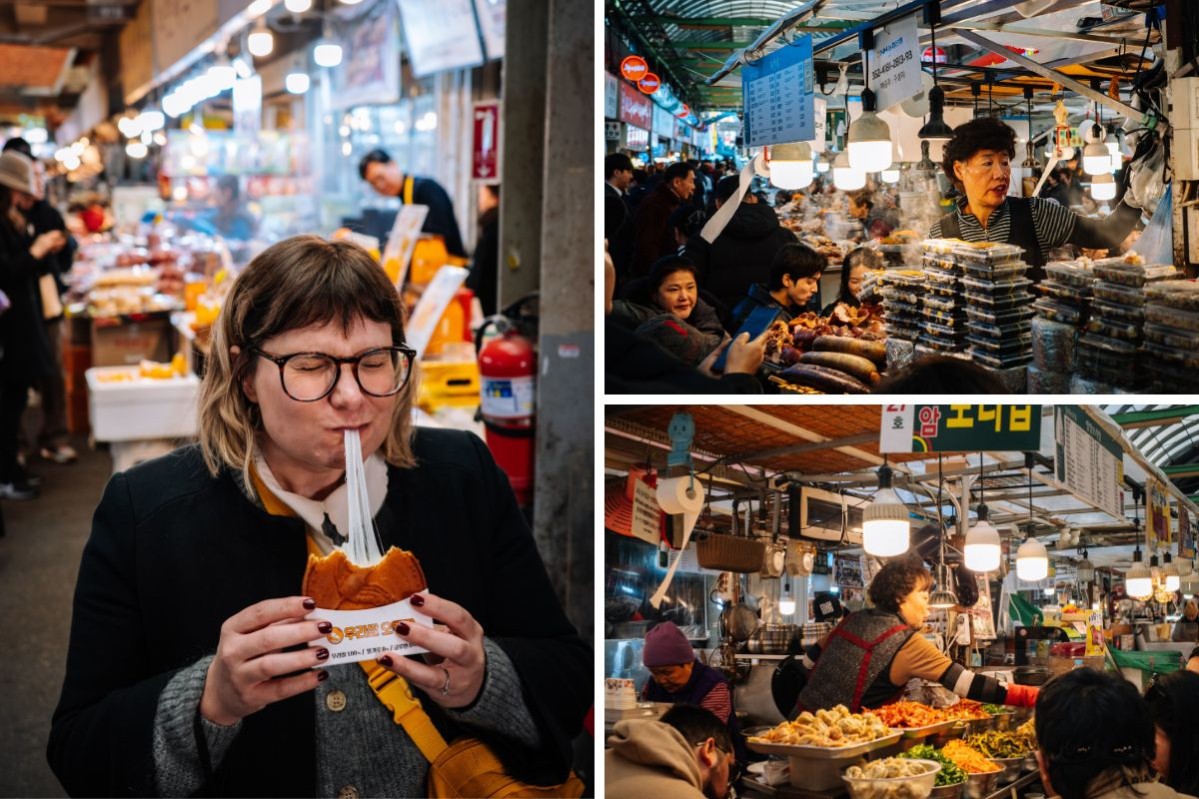
This market is known as Seoul’s busiest food alley with about 200 food stalls. Once you navigate your way through the silk, satin and linen wholesale stalls you will be greeted by the inviting sound and smells of deep-frying delights. Steam billows from all corners and the happy chatter of patrons huddled together on narrow benches enjoying nokdu bindaetteok (mung bean pancakes) made for one of my favourite experiences in Seoul. This crowded and slightly pricey market is often labeled as a tourist trap, but don’t let that deter you, its popularity isn’t by coincidence. Our highlights were seeing Cho Yonsoon (from the Netflix series Street Food: Asia) in action in her signature pink shirt at her kalguksu (knife-cut noodle) stall and eating my first hotteok (sticky brown sugar-stuffed fried pancakes). If big crowds aren’t your thing I would suggest Mangwon Market. Slightly cheaper, not so busy and recommended by locals.
Nambu Night Market, Jeonju
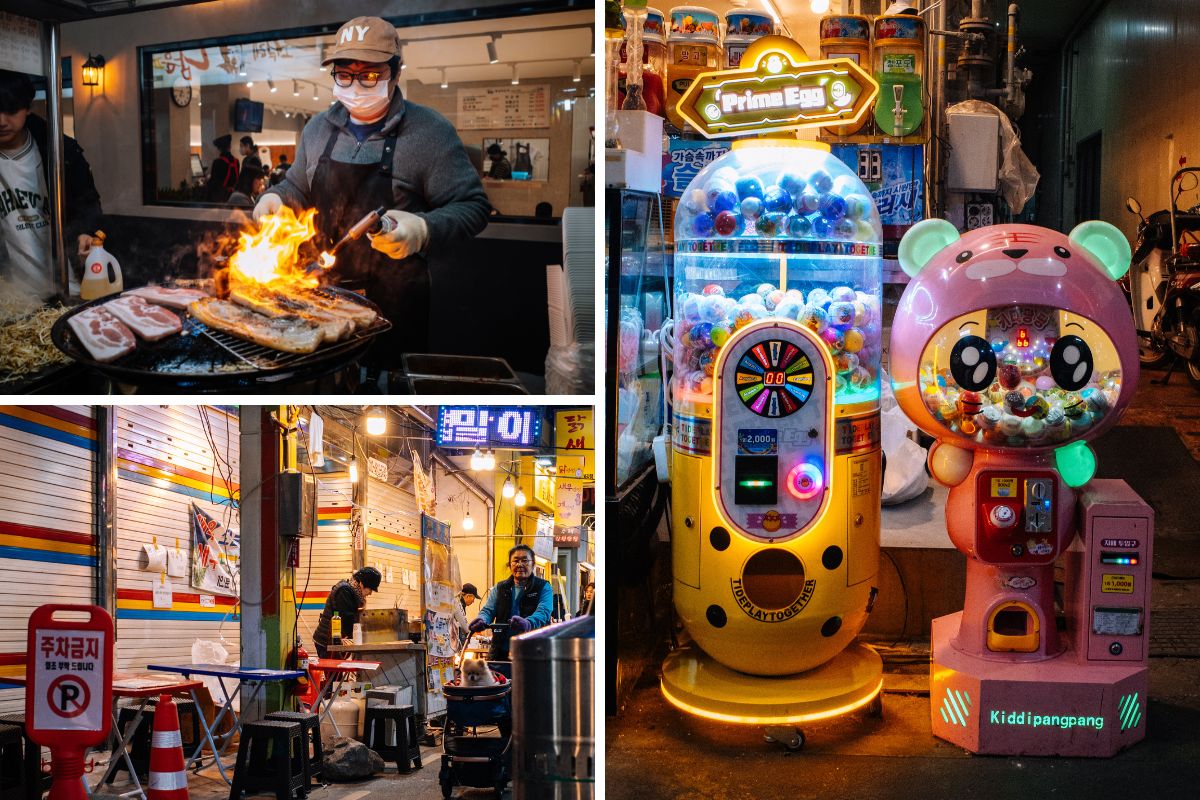
We specifically booked our trip to Jeonju to be there over a weekend to not miss this market, open on Friday and Saturday nights. We visited on a particularly cold night, which had no effect on the turnout. We navigated our way through the crowded alleyways and gawked at the theatrical use of blowtorches to create a final char on a piece of juicy pork belly or shrimp skewer. This market is known for yukjeon (pan-fried battered beef) as well as juicy, perfectly fatty barbecued pork belly served with sesame rice and kimchi, which is not to be missed. Nambu Night Market has my heart and what I really loved about it is its communal seating areas — so you can buy a range of food from different stalls and then kick back to enjoy it all together in a relaxed manner. Beer and soju (a clear, colourless spirit, similar to vodka) were also available, turning what was supposed to be a “quick snack before bed” into an unforgettable two- person party with cheap beer and a mountain of crispy, sticky and slightly spicy Korean fried chicken.
Jagalchi Fish Market, Busan
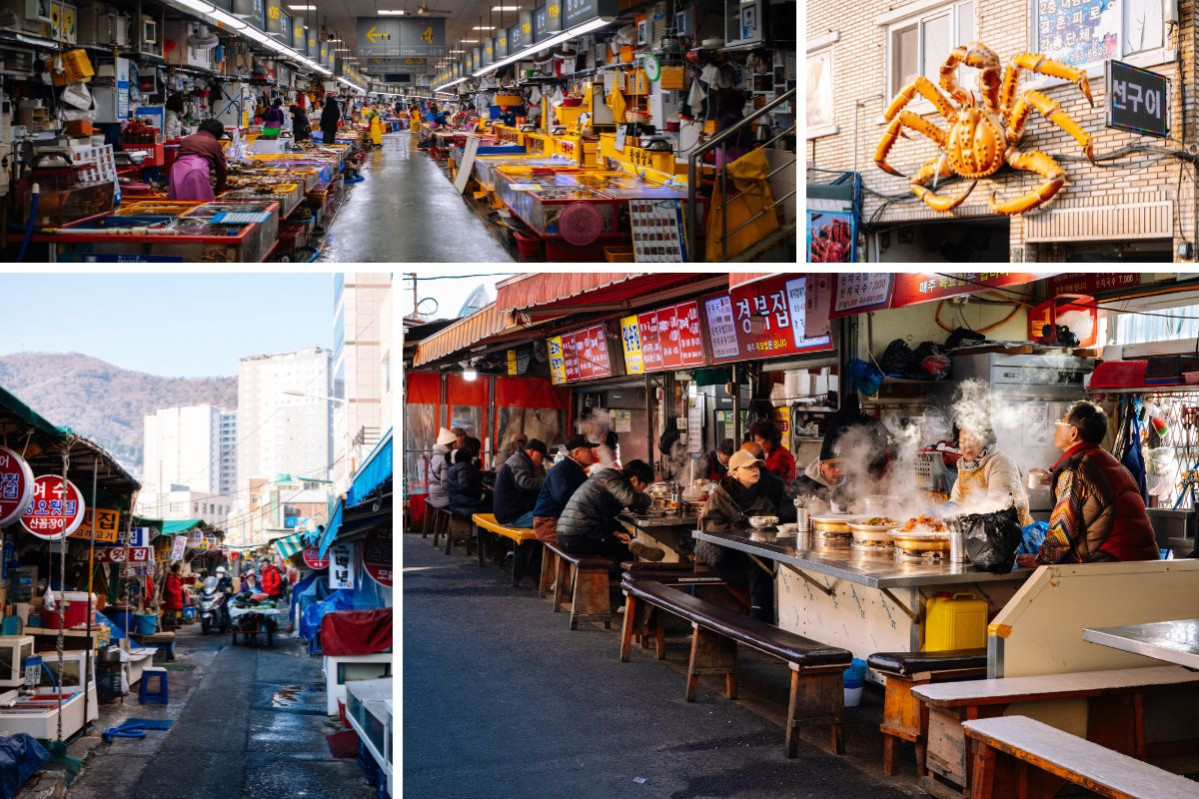
Leading up to the country’s biggest fish market are densely packed lanes lined with decades-old stalls selling just about any seafood you can imagine. Although best known for fresh, raw seafood, some informal restaurants, with barely enough room for five people to squeeze onto a bench, can be found serving a large array of fish stews and soups. Inside the main building there are hundreds of vendors where you can hand pick your favourite seafood (Busan is known for crab and eel) after which you will be directed to a restaurant on the second floor where it will be prepared for you. Keep Google translate close by — the vendors have great advice on seasonal options and how much to order.
Bupyeong Kkangtong Night Market, Busan
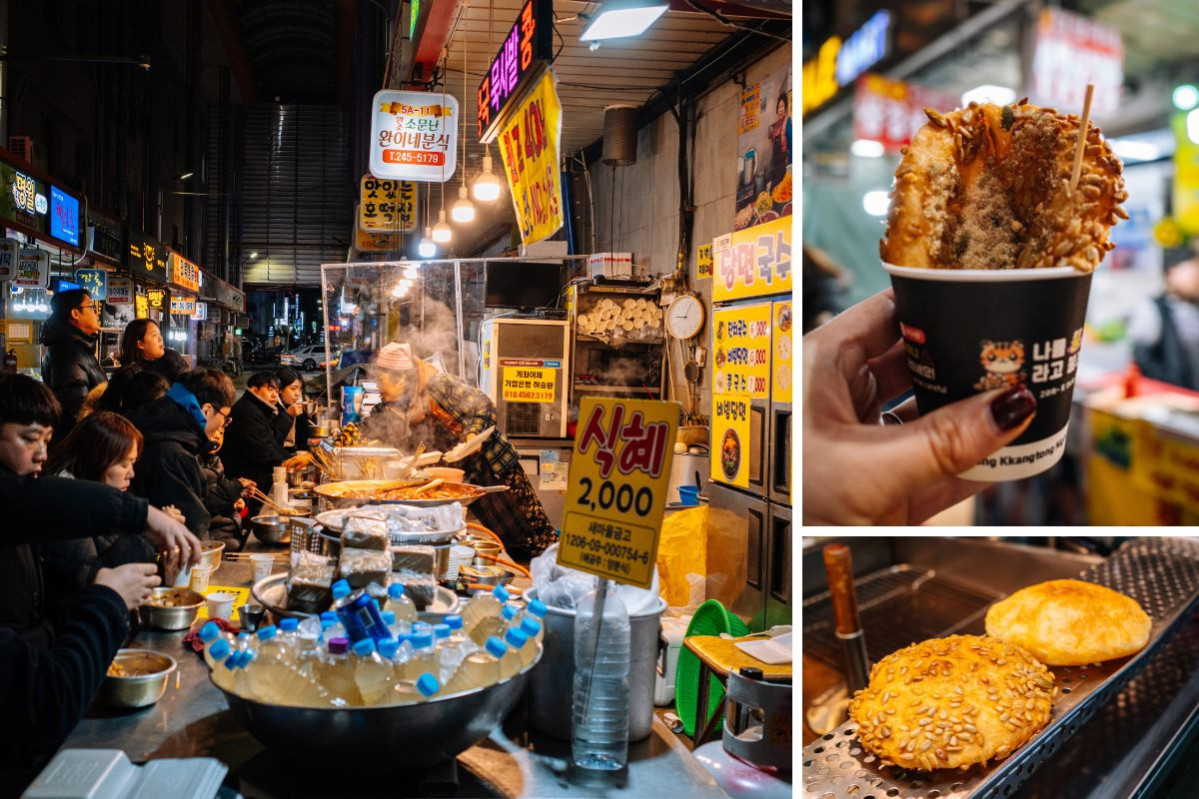
This market starts up around 7:30pm and was less crowded than others we visited. We immediately noticed it had more international fare on offer so I did some digging and learnt that, historically, the market had a reputation for importing and selling hard-to-find international products. Though international importing is much easier today, the market still has retained its “international” reputation with about a third of the stalls offering cuisine from countries such as Japan, Philippines and Turkey. Korean options are still abundant too. We were tempted by the takoyaki (Japanese octopus-filled batter balls) and since our trip was winding down I had to get my final fill of tteokbokki (a spicy rice cake dish). The sauce of the tteokbokki in Busan looked different from other regions. It was thicker and a bright red, which set off alarm bells since I can’t always handle spicy food all that well. Surprisingly it was not as spicy as it looked and was flavorful, sweet, wonderfully chewy and comforting.
Maybe I am just easily impressed — and/or the endorphins from having a good snack in hand makes it hard for me to be critical — but I loved every market we visited. There is always something delicious to snack on, interesting to look at, and a determined stall owner to teach you the best way to eat what they have to offer. For the adventurous eaters there’s pig trotters, sundae (Korean blood sausage) and kimchi dumplings so spicy they will make you think you are being punished for something you did in a past life. For the fussier eaters you have winners such as sticky fried chicken, scallion pancakes and kkwabaegi (twisted doughnuts). There truly is something for everyone.
latest issue:
Issue #120
As the days become shorter, and the nights cooler, the latest issue is perfectly timed to deliver delicious autumn dishes. From recipes using fresh seasonal produce such as feijoas and apples, to spectacular soothing soups and super-quick after-work meals in our Food Fast section, we’ve got you covered. With Easter on the horizon, we feature recipes that will see you through breakfast, lunch and dinner over a leisurely weekend holiday, and whip up chocolatey baking treats sure to please. We round up delicious dinners for two and showcase a hot new Korean cookbook before heading south to Dunedin to check out all that’s new in food and dining.The latest issue of dish is on sale NOW at all good bookstores and supermarkets – don’t miss it!

